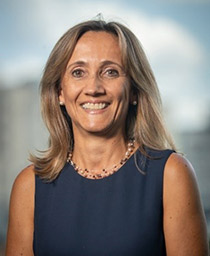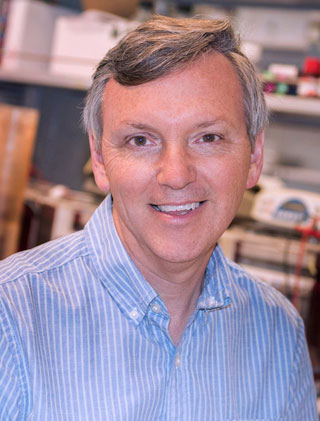
December 11, 2020
Donna Zhang, Ph.D.
Donna Zhang, Ph.D., studies a protein called nuclear factor erythroid 2-related factor 2 (NRF2) and its signaling pathway. One of Zhang’s interests is understanding the interaction between NRF2 and arsenic exposure, and how it contributes to the development of human disease.
September 28, 2020
Ilona Jaspers, Ph.D.
NIEHS grantee, Ilona Jaspers, Ph.D., has made many important discoveries about how air pollution affects the body’s ability to defend against disease and infection.
September 15, 2020
Michele La Merrill, Ph.D.
NIEHS grantee Michele La Merrill, Ph.D., explores the mechanisms that reveal how chemicals alter hormone responses in the body, leading to metabolic diseases such as obesity and diabetes.
August 21, 2020
Dibakar Bhattacharyya, Ph.D.
For over 50 years, Dibakar Bhattacharyya, Ph.D., (known collegially as DB) has been a leader in engineering specialized membranes to capture pollutants in water.
June 17, 2020
Ben Van Houten, Ph.D.
Ben Van Houten, Ph.D., uses innovative techniques to study how common forms of DNA damage are detected and repaired. Van Houten’s research is revealing how proteins find and repair damaged DNA sites known as DNA lesions.
April 1, 2020
Margaret Karagas, Ph.D.
NIEHS grantee Margaret Karagas, Ph.D., studies how exposure to environmental chemicals affects our health throughout the life course.
April 1, 2020
Wen Xie, M.D., Ph.D.
Wen Xie, M.D., Ph.D., studies how a cellular protein that detects environmental chemicals, called pregnane X receptors (PXR) also plays a role in normal functions and liver disease.
March 31, 2020
Matt Cave, M.D.
Matt Cave, M.D., explores how environmental chemicals and diet can interact and contribute to liver disease.
March 30, 2020
Gary Perdew, Ph.D.
Gary Perdew, Ph.D., studies how the aryl hydrocarbon receptor (AHR) pathway interacts with the microbiome, the immune system, and protective barriers in skin and the gut.
March 26, 2020
Brandon Pierce, Ph.D.
Brandon Pierce, Ph.D., seeks to understand how genetic differences can make a person more or less susceptible to the health effects of arsenic exposure.
March 24, 2020
Martyn Smith, Ph.D.
Important discoveries by long-time NIEHS grantee Martyn Smith, Ph.D., shed light on how exposure to contaminants can harm health and improve assessment of the health risks of different chemicals. Since its inception in 1987, Smith has directed the Superfund Research Program (SRP) Center at the University of California, Berkeley (UC Berkeley).
March 24, 2020
Myron Goodman, Ph.D.
Myron Goodman, Ph.D., studies a highly unusual DNA polymerase in E. coli bacteria called pol V that can both repair DNA and cause mutations at high frequencies. Polymerases are enzymes that build chains of polymers such as nucleic acids, the building blocks of DNA and RNA.
March 19, 2020
Kim Tieu, Ph.D.
Kim Tieu, Ph.D., has long been fascinated by brain disorders, ever since learning about drugs that target the nervous system as a college student. He received an NIEHS Revolutionizing Innovative, Visionary Environmental Health Research (RIVER) grant after discovering a new function of a long-studied protein involved in Parkinson’s disease (PD).
February 28, 2020
Graham Walker, Ph.D.
Graham Walker, Ph.D., studies the processes cells use to repair and tolerate DNA damage from environmental pollutants. For more than 40 years, he has worked to understand how cells respond to DNA damage, and how these processes can introduce mutations that lead to cancer and other human diseases.to Top


